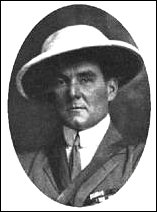Mitchell Rofsky over at Common Dreams has gone through Presidential Election Exit Polls and finds some trends which run counter to the "received knowledge" of the pundit classes:
However, a closer reading of Presidential Election Exit Polls back to at least 1996 reveals that nearly everything you’ve been told about them--and almost all the advice the Democrats are now being given--is wrong.
Liberalism is becoming less popular. WRONG!
1. Since 1996, the percentage of voters identifying themselves as Liberal has increased by 1% (to 21%) while Conservatives have also increased by 1% (to 34%).
2. The percentage of the electorate that considers the key conservative economic issue, “Taxes”, the most important issue dropped from 15% in 1996 to 5% in 2004. Even excluding Iraq and Terrorism, the salience of Taxes would have fallen to 7.6% of 2004 voters.
3. Liberalism is dependent on the popularity of the federal government. Since 1992, the percentage of people who believe the federal government should do more has increased from 39% to 46% while the number who believe it should do less has declined from 55% to 49%.
4. Based on the Issue responses, if 9/11 had never happened, Kerry would have won the election, 52/47%. This has to be taken with a grain of salt as Democrats often win on “issues” but lose elections. Still, it calls into question the post-election advice regarding the unpopularity of the Democratic message.
Democrats can’t win because they are on the “wrong” side of the social issues, popularly known as “God, Gays, and Guns “. WRONG!
These social issues may have been determinative in a number of states (Ohio, Iowa, New Mexico, Nevada, Colorado, Florida) and, given our state-based electoral system, cannot be ignored, but as national trends they are either static or losing ground.
5. Since 1996, the percentage of the vote that is Catholic and Protestant has declined by 2%, while the percentages of voters with Other Religions and No Religion increased by 4%. (Protestants are becoming more evangelical, but Protestants were already the base of the Republican Party.)
6. Since 2000, the percentage of voters who attend church monthly or more stayed the same, while the number who seldom or never attend went up 1%.
7. Pro-choice beats anti-abortion 55%/42%. (Although, since 1992, the percentage who believe that abortion should always be legal has dropped from 35% to 21%, probably due to the debate on partial-birth abortion.)
8. The support for gay marriage or civil unions actually trumps the opposition by “landslide” margins: 60%/37%.
9. Bush won over half the voters (52%) who said they favored civil unions.
10. The percentage of households who own guns has dropped from 48% to 41% since 2000. (Kerry improved on Gore’s percentage among gun owners, indicating that his effort on this issue paid off.)
11. The Democrat’s military problem may be deeper than their “God, Gays, and Guns” problem. Kerry actually won the vote of the 82% of the people who have never served. But he lost the vote of the remaining 18% by 57%/41% or 3.5 million votes, virtually the final margin. (How did the military vote in 2000? The question wasn’t asked.)
Bush won the election because he increased his small town and rural percentages while younger voters did not turn out for Kerry! WRONG!
12. According to these polls, Bush didn’t improve his percentages in small towns and rural areas from 2000. (Of course, turnout increased.) Meanwhile the rural vote, while Republican, is declining.
13. Younger voters did turn out, but everybody turned out. It’s hard for liberals to fault younger voters; they were the only age group that Kerry won. Meanwhile, Bush improved his vote among all other age groups, but especially the 24% of voters over 60, where he improved by 7% or nearly 2 million votes.
Bush’s increase among Hispanics was critical to his victory. WRONG!
14. The trend in the Hispanic vote is important for the future. But Hispanics were not the key to this victory. While 6% of Hispanics moved toward the President (other Exit Polls say it’s a bit less), Hispanics only represent 8% of the electorate (up from 3.2% in 1992). This move by Hispanics only represents a little over half a million voters, enough to help Bush erase his deficit to Gore, but not much else.
Bush’s edge over Kerry rose broadly in the battleground states as turnout increased. WRONG!
15. Bush’s percentages increased narrowly in the battleground states: Bush increased by 23%, Kerry by 21%. In the safe Bush states, Bush was up 21%, Kerry 12%. The key to Bush’s margin was actually the safe Kerry states where Bush was up 16%, Kerry only 5%. Did this result from the fact that 9/11 happened to directly impact residents of blue states (NY, NJ, PA, DC)? Was it the lack of effort of a Kerry campaign focused on the battleground states? The natural edge of incumbency? The exit polls can’t help us.
Subscribe to:
Post Comments (Atom)

No comments:
Post a Comment